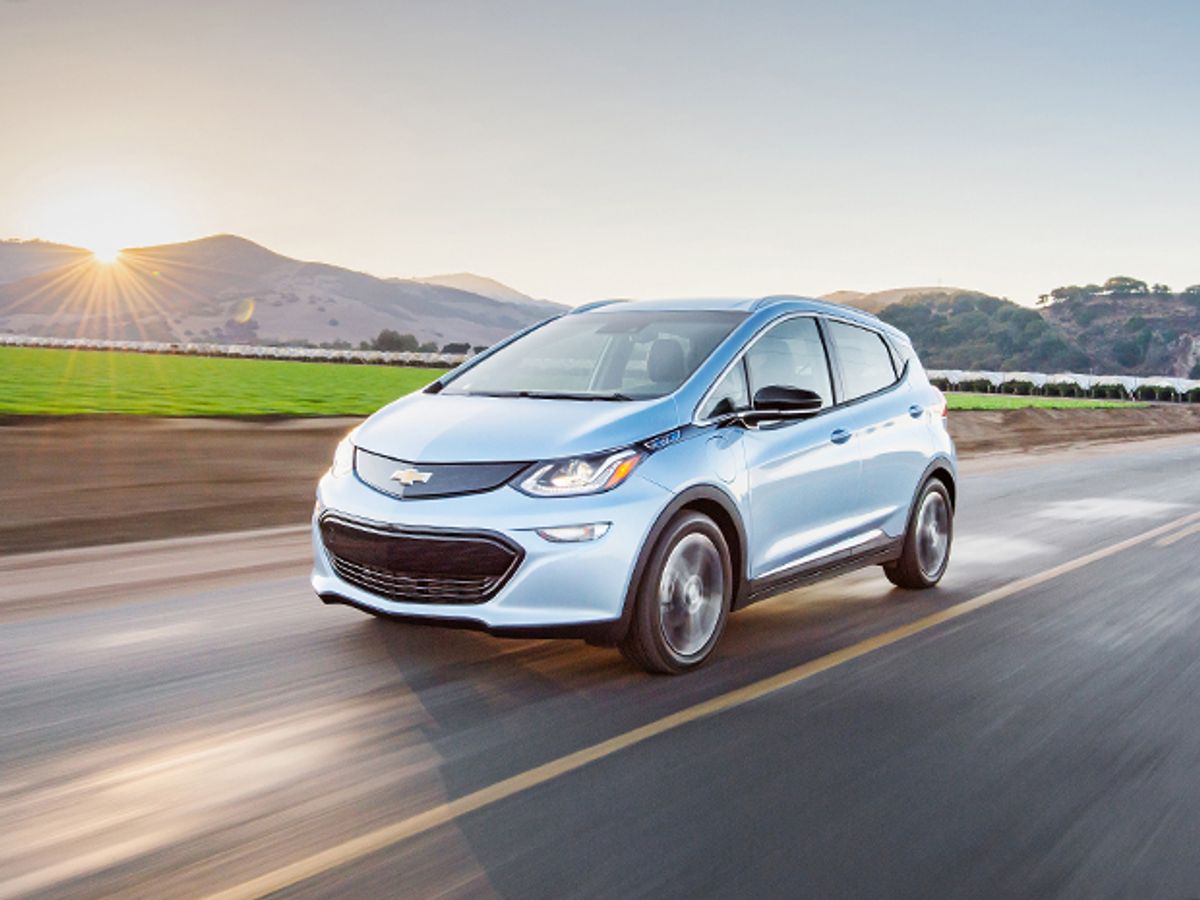A lot of talk on self-driving cars name-checks electric drive as well, which might lead you to put the pairing of these technologies down to fashion.
And indeed, in May, as the Lexis/Nexis database shows, of 1641 newspaper references to either “driverless” or “self-driving,” 185—that’s 11 percent—fell within 10 words of “electric.” A good part of the reason for this is carmakers’ strenuous efforts to associate themselves with futuristic ideas.
BMW has gone further than most by establishing its i-series. Just yesterday the company confirmed that the iNext, due out in 2021, would be both fully self-driving and fully electric. General Motors has pinned its driverless ambitions on the all-electric Chevrolet Bolt. Last week, Ford decided to install as its chief executive the guy who’d formerly headed research on both EVs and robocars.
But EVs and robotics really do mesh perfectly, both in the early development stage and later on, when the technologies are meant to take over the world.
The early-development part of the argument is simple. The main limitation of today’s electric car is its limited range, but that’s no problem for the very first self-driving vehicles, which are slow and limited to protected routes. Think of the trams now roaming the malls of British towns like Milton Keynes and Conventry, or the Waymo experimental car without a steering wheel, a safety-first car that’s as rounded and soft as the Pillsbury Doughboy.
But a few years from now, when e-drive cars will have much more range, the main reason for EV robocars will kick in: mobility as a service. It’s becoming clear that most self-driving cars won’t sit in your garage but will wander the streets, providing ride-hailing service. Today such service, provided by the likes of Uber and Lyft, depends on a driver/owner who refuels and maintains the car. Tomorrow’s robocars will be owned and operated by fleet managers, and they will want cars that can largely take care of themselves.
An electric self-driving car does that better than its gas-powered rival for several reasons. First, it can recharge easily by using wireless inductive pads. That’s one reason why such charging is taking off—next month, for instance, the auto supplier Continental will demonstrate another such system. The robocar’s only challenge is to position itself squarely over the induction pad, a problem that companies like Waymo have been working on for years.
Contrast that with the task of filling up a car’s tank at a service station. The poor robocar would have to reach out, unscrew a cap, grab a gas pump, and press on the pistol grip. A robot’s task would be rather like what a military pilot does during the delicate docking needed for air-to-air refueling.
Then there’s upkeep. When you hail a ride from Uber or Lyft, the maintenance man is the very guy who picks you up. He refuels, parks, and does much of the servicing of the car. When those drivers are replaced by automation, such burdens will fall on the fleet operator. They’ll favor electric cars that are easier to maintain than their gas-powered rivals because they have fewer moving parts.
Lubricate an internal-combustion engine with oil, and it may still seize up on a hot day. Take it in for regular checkups, and a cylinder ring could still get fried. Gearboxes break, spark plugs foul, fuel-injectors clog, and on and on. But an electric motor spins without a hiccup, and because of its wonderful range of torque, its transmission needs but a single gear.
Last and best, EVs are expected one day to cost less to buy and own than today’s cars. Last month the Swiss bank UBS estimated that the overall cost of owning and operating an EV will reach rough parity with gasoline-powered cars as early as next year, in Europe, and by around 2025, in the United States. The study estimated that General Motors now loses about $7,400 for every Chevrolet Bolt that it sells in the U.S., at least while production is still ramping up; it projects that the company should clear a profit by 2025.
But even 2025 should be soon enough for the robocars. However ambitious carmakers’ stated goals may be, we won’t be seeing many truly driverless cars on the road before then.
Philip E. Ross is a senior editor at IEEE Spectrum. His interests include transportation, energy storage, AI, and the economic aspects of technology. He has a master's degree in international affairs from Columbia University and another, in journalism, from the University of Michigan.



